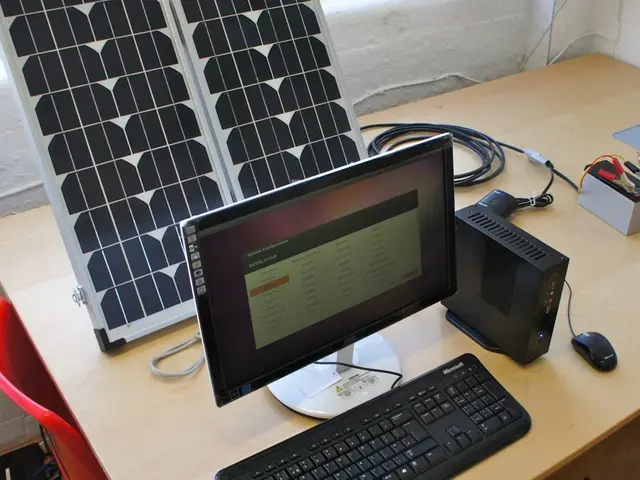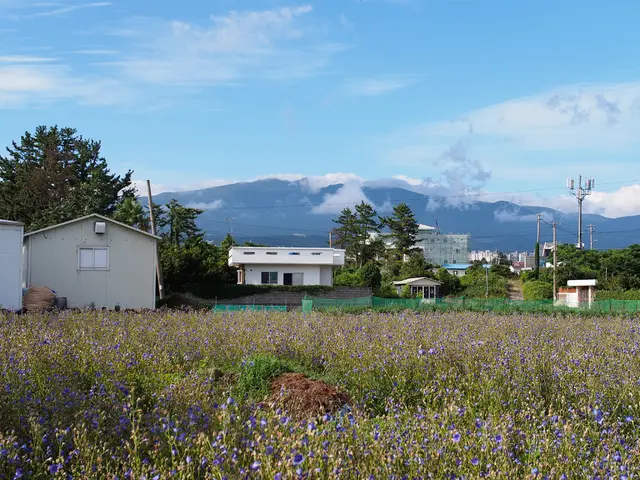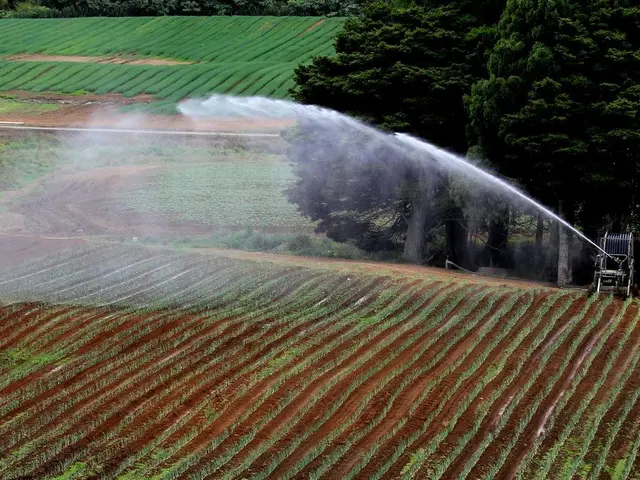A Drop in Wind Energy Output in Thuringia
Reduced yield from wind turbines reported in Thuringia - Lower wind energy production observed in Thuringia
In Thuringia, the first quarter saw a notable dip in power generation - especially wind turbines in the state delivered significantly less energy. This is evident from numbers released by the Statistical Office in Erfurt, showing around 2.757 gigawatt hours of power fed into the grid within the state from January to March's end, a decrease of about ten percent compared to the previous year. The share of electricity from renewable sources decreased from 64 percent to 55 percent, to about 1.519 gigawatt hours.
The main cause for this decline was less wind energy, whose production depends on weather conditions. Despite the sluggish progress, the construction of new wind power plants in Thuringia has been slow for years. There are only a few large projects in which old turbines are being replaced by more powerful and larger wind turbines within wind farms, as reported by the Ministry of Energy. In May, the modernization of a wind farm near Jena was completed, with fewer turbines producing more power according to the operators.
A more than 38 percent decrease in wind power was reported in the first quarter, with the Thuringian wind power plants supplying around 808 gigawatt hours of energy, accounting for 53 percent of the renewable power supply.
Power plants using biomass fed approximately 332 gigawatt hours into the grid, with 173 gigawatt hours from biogas. This amount of power corresponded to a share of 22 percent of the green power supply, only slightly rising compared to the previous quarter. The almost 75,000 solar plants within the state contributed around 326 gigawatt hours - a share of just over one fifth. The power production by solar plants increased by almost a third compared to the previous year.
- Thuringia
- Wind power
- Power
- Solar energy
- Erfurt
- Jena
- Wind turbine
- Biomass
- Green energy
- Grid
Thuringia, often known as the "Green Heart of Germany," has been investing in renewable energy and green technologies, shown by recent industrial projects like the new Electrolyzer Gigafactory for green hydrogen in Erfurt. This displays the continuing commitment to sustainable energy and industrial innovation in the region.
When analyzing potential factors contributing to reduced wind energy production in Thuringia, several aspects could be taken into consideration. For instance, periods of unusually low wind speed can lead to significant drops in generation, as observed in early 20xx across Germany. Moreover, the integration of wind energy into the grid depends on infrastructure and market incentives, and if these are insufficient or unfavorable, this may discourage new projects and maintenance of existing turbines.
Furthermore, policy uncertainty or regulatory changes in the energy sector may impact investment and maintenance in renewable energy projects. Broader European trends indicate a slowdown in new wind turbine orders and investment, partly due to market saturation, supply chain issues, or shifting priorities toward other renewables. Lastly, voter skepticism and political acceptance of renewable energy policies could slow down or complicate wind energy development in the region, especially in regions where parties less supportive of current climate policies gain influence.
- The decrease in wind energy output in Thuringia could be due to factors such as periods of unusually low wind speed and insufficient integration of wind energy into the grid, which may be influenced by infrastructure, market incentives, policy uncertainty, and regulatory changes.
- As Thuringia, often known as the "Green Heart of Germany," invests in renewable energy and green technologies, it's important to address potential challenges in wind energy production, including infrastructure development, market incentives, and regulatory support, to continue its commitment to sustainable energy and industrial innovation.
- In light of the slowdown in new wind turbine orders and investment on a broader European scale, focusing efforts on improving grid infrastructure, market incentives, and policy certainty within Thuringia could help mitigate the impact of market saturation, supply chain issues, and shifting priorities toward other renewables, fostering continued growth in wind energy production.







